Learning to make pottery in Peru along with a few things about kindness
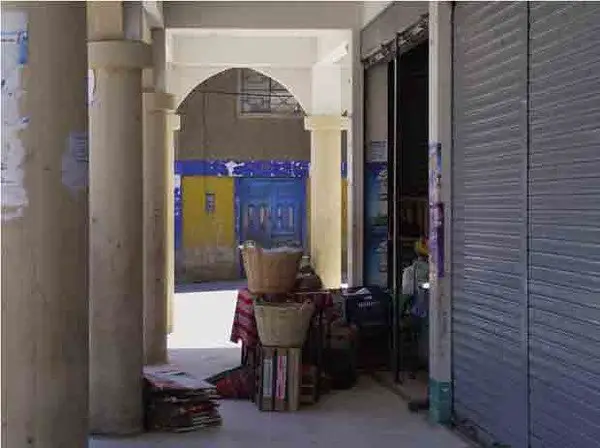
It was just an ordinary journey in the Peruvian Andes. I was squashed into a corner of the minivan while the hardy-looking matriarch beside me unwrapped a small child, blanket after blanket and ended up on my lap. We bumped and juddered our way along the unpaved road, looking up at the mountains on each side. The bus veered around a corner and stopped sharply. I looked round, but the mother, baby and blankets had gone. They reappeared on the street outside as if in some kind of magic trick, with the baby now rewrapped and bundled onto the back of the mother. It had all been done in the blink of an eye.
[pullquote]All of us had jumped at the chance when Luis, the volunteer coordinator, had suggested classes with a local artisan.[/pullquote]A few moments later, as the bus turned onto a dirt track, we got off as well. We were in Tarica, Peru, a small community of artisans in the Andes. We had an uphill walk to the church, around which was a smattering of small shops selling handicrafts and snacks. We went a bit further and reached a house with two dogs basking in the sun outside. This was the home of Don Pablo, a master potter. I was breathless – both with excitement and the effects of the altitude – as we knocked on the door. I had come with two of the other volunteers who were also staying at the Delgado house in Huaraz. All of us had jumped at the chance when Luis, the volunteer coordinator, had suggested classes with a local artisan.
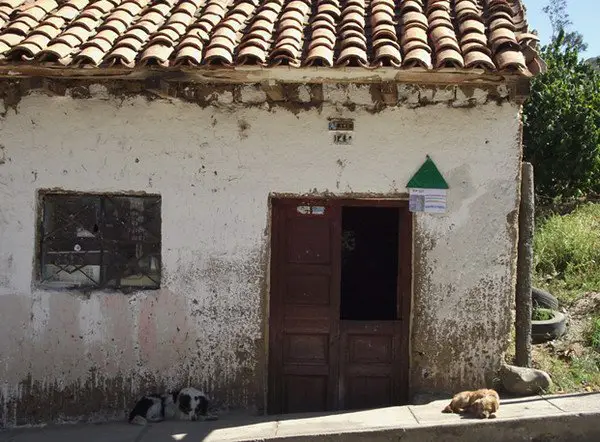
A grey-haired lady opened the door, a small child on her hip and another standing shyly behind her, clutching her skirt. She told us that her husband was in his workshop and pointed out where to go, just across the road. We entered the compound and passed two deep troughs filled with clay. We ventured inside the low whitewashed building, calling out Don Pablo’s name.
A man appeared from the dark interior. He must have been in his late 50s, but he still had black, wiry hair. His hands were covered in clay.
“Hello, Come in!” He welcomed us and we followed him into the workshop.
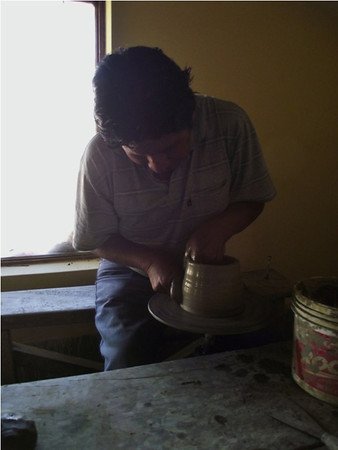
The building consisted of several large, hexagonal rooms, one of which contained five pottery wheels. Another had a circular workbench built around a pillar in the middle of the room. Everywhere, there were stacks of pots, jugs and bowls in various stages of preparation.
Don Pablo gave us the quickest tutorial in the world, conjuring up a perfect pitcher from his ball of clay in about two minutes flat. With that as our daunting example, he gave us some clay and sent us off to the pottery wheels.
I had used one a couple of times before, but this was a different experience; rather than being operated by a mechanical pedal, there was a large wooden disc that you kicked to make it spin. The faster you kicked, the faster the top disc – on which you put the clay – spun. It soon felt very natural and I loved the simplicity of it. No electricity, no plugs or wires, just two wooden wheels.
With a bowl of water and sponge at the ready, I slammed my ball of clay onto the wheel, squeezed some water onto it and began to make the wheel spin, holding the clay firmly. I felt like I was doing OK until Don Pablo came and stood over me, like a disapproving headmaster. Under his burning gaze, I began to form my clay into a vague pot shape, eventually producing something that I was halfway proud of. It hadn’t fallen to pieces and, well, it looked like a pot.
I slid a cheese wire under it, removing it from the wheel, and set it down triumphantly on the workbench. Don Pablo looked at it critically, picked it up and put it down again. Then he looked at me, hands on hips. He was frowning. Eventually, he said: “Bueno. Es… algo.” It’s something. Then he moved on to critique someone else’s creation. I looked at my pot and sighed. I got another piece of clay, but now it was all going wrong and I just finished up with a pile of squashed clay.
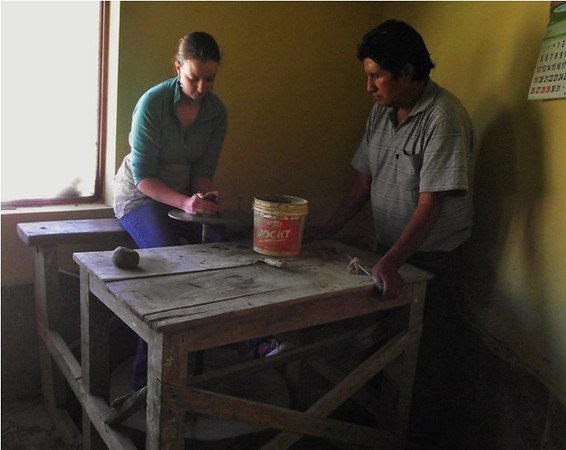
Over the next couple of weeks, both Don Pablo and his wife gave us instructions, suggestions and techniques, showing us to how to make the clay do what we wanted it to, how to make it even and how to file and polish a finished piece. I spent hours at the wheel, losing track of time, aware only of the clay. It is the closest to meditation I’ve ever come. Finally, we had all completed a few pieces and we put them in the kiln. My wonky pot was already fired, so I painted a bright floral pattern onto it. Don Pablo passed as I was painting. “It looks a little better,” he said kindly. I beamed.
[pullquote]As he gave me mine, he looked at the little vase I had made. “Now this,” he said, “is good.”[/pullquote]We had to go Tarica once more to collect our fired items. Don Pablo’s wife greeted us like long-lost children, ushering us inside her home while her husband went to collect our pottery. He reappeared a few minutes later, arms full of pots. As he gave me mine, he looked at the little vase I had made. “Now this,” he said, “is good.”
I felt my cheeks flush. This was high praise indeed. I carefully wrapped the vase, the bowl and even the little wonky ‘something’ pot. We thanked Don Pablo and hugged his wife, who made us promise to visit them again someday. We made our way back to Huaraz, carefully holding our packages like they were newborns. A dreadful thought struck me. I still had three months of travelling to do. How on earth was I going to get my pots from Peru home without smashing them?
Well, the bowl smashed on the first journey. I gave the wonky pot to friends in Argentina who loved the story. And the little vase? I carried it all over the continent and got it back safely. It now sits on my windowsill, a reminder of Tarica and the kindness I received there.
*All photos provided by the author and used with permission ©
Pin for Later
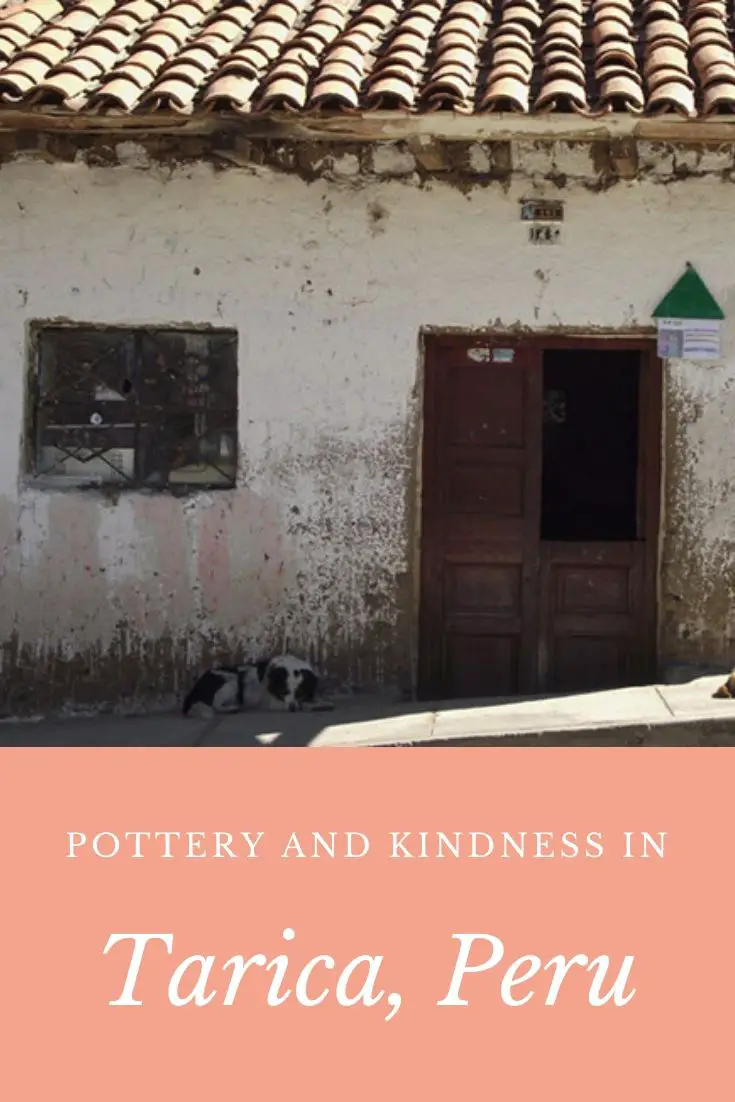
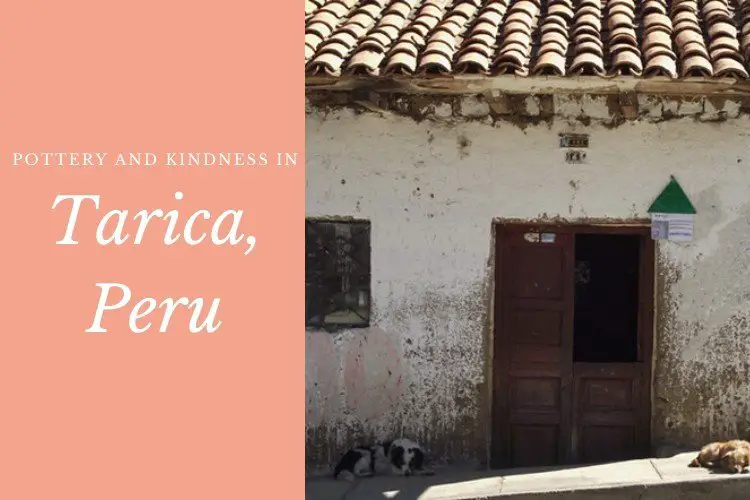
What a wonderful story, and a unique souvenir with a tale to tell!
Thanks Briana 🙂 Out of four months of travels, this is one of my favorite memories!
Thanks Kathryn, it is a special little souvenir!
What a cool experience! I am no good at making pottery like that. Good on you for getting the little vase safely to a resting spot!! Serious backpacking skills!
I love that you kept at it until you had a perfect keepsake to remind you of this day. 🙂
Charming story – bueno indeed!
What a fun way to spend an afternoon!
I loved the pottery classes I took in high school. I never thought about picking it up again, but I would love to have an experience like this while traveling.
Beautiful story, Katy! I’m glad the vase made it back to the UK safely. I’m not sure I would have had the patience for pottery, but sounds like it was worth persevering for such a great experience.
Very nice story and experience.
hmmm…pottery…never had considered it , frankly. Nice story!
Yup. It is official. I can only think about the movie Ghost when I see pottery made. *sigh*
This sounds like a really fun and authentic experience! I remember trying to make pottery at an art class when I was younger, and it was surprisingly hard–I always ended up with a gooey mess. I like the idea of the spinning wooden wheel instead of an electric machine!
I would have LOVED doing this in Peru. I wish I knew about it!